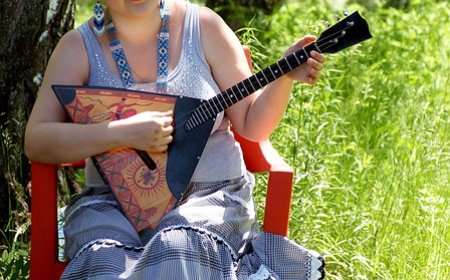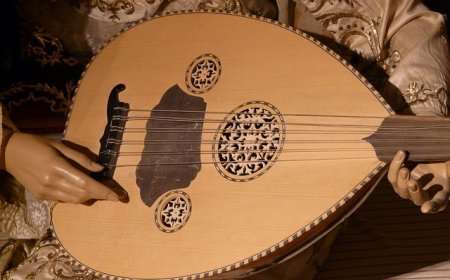Cowbell Instrument Facts for Students | Learn About the Cowbell in Music
Learn what the cowbell is, how it's played, its musical history, and how it adds rhythm to music. A fun, educational guide with famous players, fun facts, and a student quiz
🐄 All About the Cowbell
🥇 Introduction
The cowbell is a small metal percussion instrument with a distinct “clank” sound that cuts through any band or ensemble. Originally used by farmers to keep track of cows, the cowbell eventually found its way into Latin music, jazz, rock, funk, and even orchestral works. Today, it’s known for adding drive, groove, and a bit of flair to musical rhythms all over the world.
🎶 What Is a Cowbell?
A cowbell is a hollow, bell-shaped piece of metal that is struck with a stick or beater. It doesn’t have a clapper inside (like a real bell), so the player hits it on the outside. The sound is sharp and metallic, and the cowbell comes in different sizes that each produce a slightly different pitch and tone.
There are two main types of cowbells used in music:
- Handheld cowbell – Played by holding the bell in one hand and striking it with the other
- Mounted cowbell – Attached to a stand, drum kit, or timbales and played with sticks
In styles like salsa and Latin jazz, the cowbell keeps the beat. In rock and funk, it adds cool rhythmic accents. The cowbell is simple to play—but it takes skill to play it well!
🧩 Parts of the Cowbell
Though it may look basic, the cowbell has specific parts that affect how it sounds and feels:
- Bell Body – The metal cone or box that resonates when struck
- Beating Surface – The side or edge where the stick strikes the bell
- Handle or Mounting Bracket – A grip or clamp used to hold the cowbell or attach it to a stand
- Opening – The wide, open end of the bell where sound escapes
Cowbells are usually made of steel or brass, and come in a variety of finishes like polished chrome or matte black.
⚙️ How Does the Cowbell Work?
The cowbell works by vibrating metal when struck. The shape of the bell causes the sound to resonate inside the hollow space, producing a clear, metallic tone. Different striking techniques create different effects:
- Center hit – Loud, clean “clonk”
- Edge hit – Higher-pitched and shorter sound
- Muffled hit – Holding the bell while striking it creates a softer, muted tone
- Open tone – Letting the sound ring freely
Cowbells are often used to keep steady time or to add syncopation and energy to grooves.
📜 History of the Cowbell
The cowbell began as a functional tool on farms, used to track livestock like cows and sheep. Farmers hung bells around the animals’ necks so they could hear them in the fields. These bells date back to ancient times and were used in many countries including Switzerland, Africa, and China.
The cowbell became a musical instrument in African and Latin American cultures, especially in Cuba and the Caribbean. Musicians in salsa, son, mambo, and timba used cowbells in percussion sections. Later, the cowbell was adopted into rock music in the 1960s and 1970s, where it became popular in funk and pop as well.
Today, cowbells are found in many styles of music and are even a comedy favorite thanks to the phrase: “More cowbell!”
🥁 Famous Cowbell Players
While the cowbell is often part of a larger percussion setup, these musicians helped make it famous:
- Tito Puente – Legendary Latin musician who featured cowbell in mambo and salsa
- Ray Barretto – Afro-Cuban percussionist known for using cowbell in jazz and salsa
- Steve Gadd – A drummer who uses cowbells for subtle accents in pop and jazz
- Roger Taylor (Queen) – Used cowbell in hits like “We Will Rock You”
- Will Ferrell (comedy sketch) – Made “More cowbell” a pop culture hit with his Saturday Night Live performance
🎶 Learning to Play the Cowbell
The cowbell is an excellent percussion instrument for beginners and advanced students. It’s easy to start, but hard to master! Playing the cowbell helps build rhythm, time-keeping, and coordination.
Students learning cowbell will practice:
- Holding the cowbell properly (or using a stand)
- Using sticks to play steady beats and syncopated patterns
- Playing with dynamics—soft vs. loud strikes
- Performing rhythms for Latin styles like son clave and mambo
- Adding the cowbell into ensembles or drum kits
It’s a great instrument for classrooms, bands, marching percussion, or music therapy settings.
😄 Fun Facts About the Cowbell
- Cowbells come in high-pitched and low-pitched varieties—some are even tuned!
- In a famous comedy sketch, the line “More cowbell!” became a pop culture catchphrase.
- Some drum kits include multiple cowbells in different sizes and pitches.
- A cowbell has no clapper inside—the player makes the sound with a stick.
- Cowbells are used in rock, salsa, jazz, funk, marching band, and classical music.
- The cowbell is often used to keep the “time” or beat in Latin percussion music.
👧 Kid-Friendly Summary
The cowbell is a metal instrument that goes “clank” when you hit it with a stick. It used to be used on real cows, but now it’s part of music! People play cowbells in salsa, rock, and even marching bands. You can hit it soft or loud, and it helps keep the beat. It’s simple and fun to play!
📚 Vocabulary Words
- Cowbell – A metal percussion instrument that makes a clanking sound when struck
- Percussion – Instruments that make sound by being hit or shaken
- Mounted Cowbell – A cowbell attached to a stand or drum kit
- Handheld Cowbell – A cowbell held in one hand and played with a stick
- Tone – The sound quality or pitch made by striking the bell
- Timekeeping – Keeping a steady beat or rhythm
- Syncopation – Rhythms that put accents on unexpected beats
- Clave – A rhythmic pattern in Latin music where cowbell is often used
❓ Interactive Quiz
1. What is a cowbell made of?
A. Wood
B. Plastic
C. Metal
D. Rubber
2. How is the cowbell played?
A. With a bow
B. With hands
C. With a stick
D. With a foot pedal
3. What kind of music uses cowbells?
A. Rock
B. Salsa
C. Funk
D. All of the above
4. What is a mounted cowbell?
A. One you ride on
B. One attached to a drum or stand
C. One with a clapper
D. A cowbell that rolls
5. What famous phrase made the cowbell a pop culture star?
A. Ring that bell
B. Play it loud
C. More cowbell
D. Drum it up



















































